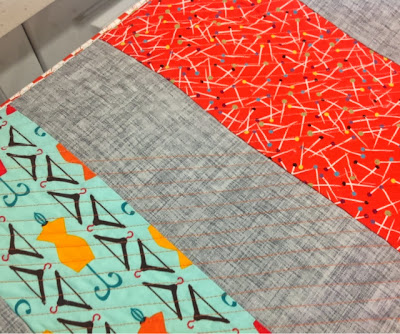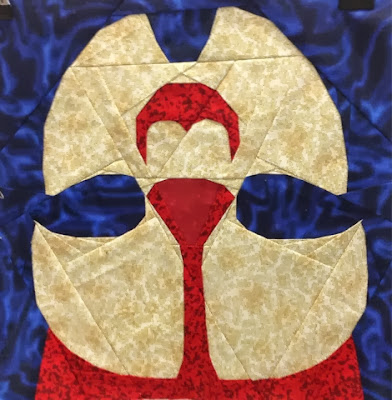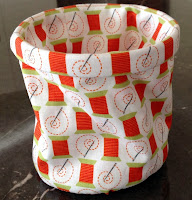I sit down to write a blog post every few months. The post makes it to the draft stage, I go hunting for photos, get distracted, and that's the end of that.
Somewhere or other, I'm sure I've mentioned that I have a predilection for paisley...not the first pattern that comes to mind for modern quilters...but if I'm going to get maximum use out of this planner, there had to be paisley somewhere in the cover.
Several years ago I impulse bought (confession number two: nothing has changed over the years), some fabrics from the "Cuteville Country Fair" range, mostly because of the red and blue colourways of the paisley.
I've used it for the inside front and back flap covers and the contrast gingham and triangle patterns make me very happy.
I am determined to get this one posted. Just like I am determined to get organised this year.
The Quilters Planner was to be my saviour. So let's just ignore the fact it's more than mid-way through April and celebrate a finish.
So what do you need to get organised? Cover the planner comes to mind...
This zippy cover tutorial is provided on the Quilters Planner website and was easy...and more importantly...fun to make.
Confession time...I hoard selvedges. This just seemed to be the most perfect use for them, and the way it's turned out...well let's just say that I can't wipe the silly grin off my face.
 |
| Front of the zippy planner cover |
 |
| Back of the zippy planner cover |
Several years ago I impulse bought (confession number two: nothing has changed over the years), some fabrics from the "Cuteville Country Fair" range, mostly because of the red and blue colourways of the paisley.
I've used it for the inside front and back flap covers and the contrast gingham and triangle patterns make me very happy.
 |
| Inside front flap cover |
 |
| Inside back flap cover |
The cover has a zip pouch at the front, a pocket on each inside flap, a needle minder on the inside front. There's a scissor minder and business card sized pocket...credit cards fit too... on the back. The obligatory measuring tape twill bookmark is there too...and elastic to hold it closed.
I am convinced all that stuff that will make me churn out quilts at an alarming rate...
So now I have the outside all sorted...time to make a start on using the inside...
I am convinced all that stuff that will make me churn out quilts at an alarming rate...
So now I have the outside all sorted...time to make a start on using the inside...
thanks for taking a peek over the fence...


























































